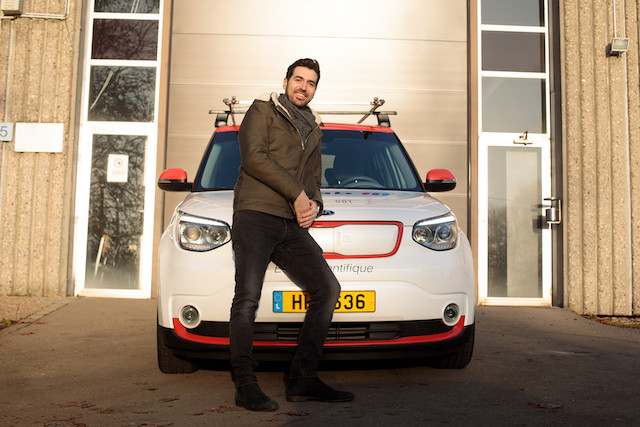The world has been inching toward autonomous cars for years. Google spinout Waymo in December announced it would open new testing centres to replicate dense urban environments after starting first road tests in 2017. And China’s AutoX this month said it was ready to roll out a fleet of 25 robotaxis in downtown Shenzhen.
“We don’t want to say we’re better than Google or Tesla. We work on niches,” said Raphaël Frank, who leads the research laboratory. One of the areas the scientists are studying is how autonomous vehicles localise themselves--technology that is critical for a driverless car.
The lab has teamed up with Silicon Valley startup Civil Maps, which develops high-definition 3D maps. “As humans, we have our two eyes, with which we can estimate distance,” Frank said. “A camera system has only one lens. It’s much more difficult.” Combining the information from the map with data from the camera system could improve accuracy.
The laboratory uses a test car for its research, equipped with the technology the team is working on. “Our researchers can get hands-on experience” said Frank. He hopes to take the vehicle on test drives on Luxembourg’s public roads next year.
Complexity hurdles
“We have figured out technically around 95% of all the situations in everyday driving,” said Frank about the technical ability of driverless cars. “But then you still have these 5%, which are the most difficult problems. If something happens in these 5% of cases, then who is going to be liable?”
US company Uber avoided criminal charges over a fatal accident in March 2018 involving one of its self-driving cars. The vehicle’s safety driver, however, has been charged with negligent homicide for watching TV at the time of the collision, which killed a cyclist.
Frank expects the introduction of automated driving to be gradual. In controlled environments, such as motorways with dedicated lanes, automated cars perform well. “If we’re talking about an urban scenario with all the complexities and unpredictability of humans and pedestrians, we are far from reaching full automation,” the researcher said.
It could also take a generational shift for the technology to gain traction, he said, comparing it to the switch from manual shifting to an automated gearbox. “It took forever for people to adapt to automatic but it’s happening.” A self-driving car could further add to the convenience and we already trust driverless technology, for example in airport trains.
Different applications
Frank and his team also work with insurance company Foyer to deliver data on driving to help figure out insurance premiums on increasingly automated cars, for example equipped with cruise control, automatic braking or parking assistance. “The goal is to see how those sensors and systems can be used to better assess the risk of a driver,” Frank said.
With most of today’s cars equipped with connectivity features, such as the eCall system, the researchers can access more data about driving behaviour, with the consent of the driver. “We provide interfaces, and we need to carry out tests with insurance companies to validate the technology with real users and test customers,” Frank explained.
The professor in 2014 co-founded the university’s first spin-off, Motion-S, a platform offering a version of this technology, using mobile data to measure mobility. He has since returned to the world of research to focus on the “long term” and continue discovering new ways in which the systems can be used.
The National Research Fund, for example, in April awarded Frank a grant for a project using the AI behind the car camera systems to develop tools on monitoring physical distancing in public places during the pandemic using data from public webcams. “The beauty of those technologies is that they have many different application areas,” said Frank.
